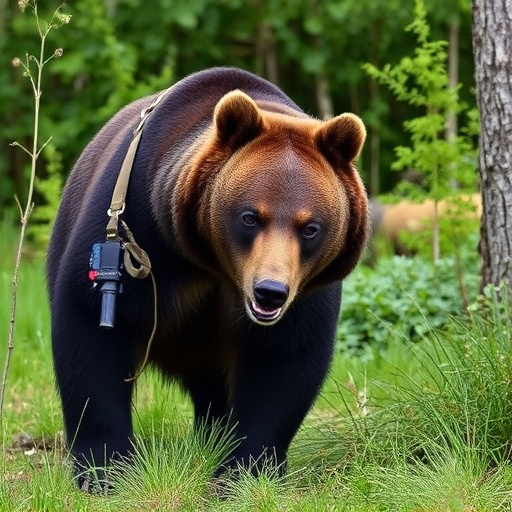Bears pose a significant threat to outdoor adventurers, making understanding pepper spray's effectiveness crucial. Capsaicin-based pepper spray temporarily disorients bears by irritating their sensory systems, offering an escape window. The spray lasts 20-60 seconds, with surface contamination detectable up to several hours. Ideal conditions can extend residue up to 24 hours, but adverse weather and surfaces can quickly dissipate it. Best practices include understanding regional regulations, learning the spray's range and accuracy, practicing in open areas, maintaining the device, and having calm reflexes. Knowing how long pepper spray contaminates the environment is vital for effective use.
“In the wild, encountering a bear can be a frightening prospect. For outdoor enthusiasts and those living in bear country, knowing how to prevent and manage such encounters is crucial. This article explores an essential tool in bear attack prevention: pepper spray. We delve into the science behind its effectiveness, examining how long pepper spray contaminates the environment and factors influencing its longevity. Additionally, we provide safety considerations and best practices for optimal usage.”
- Understanding Pepper Spray Effectiveness Against Bears
- The Science Behind Pepper Spray Contamination Duration
- Factors Influencing Bear Spray Residue Longevity
- Safety Considerations and Best Practices for Usage
Understanding Pepper Spray Effectiveness Against Bears
Bears are powerful and unpredictable animals, making it crucial for outdoor enthusiasts to understand the effectiveness of pepper spray as a defense mechanism. Pepper spray, or capsaicin-based spray, has gained popularity as a non-lethal deterrent against bear attacks. It works by irritating the eyes, nose, and respiratory system of the animal, temporarily disorienting it and providing an escape opportunity for humans.
While pepper spray can be an effective tool, its impact is short-lived. The duration of contamination varies depending on factors like spray concentration, weather conditions, and bear behavior. Typically, pepper spray’s effects last from 20 to 60 seconds, after which the bear may regain its senses. It’s important to remember that this window of opportunity should be used to create distance and escape potential danger. How long the spray remains effective on surfaces can also vary, with traces detectable for up to several hours, ensuring residual deterrence in certain scenarios.
The Science Behind Pepper Spray Contamination Duration
The effectiveness of pepper spray in deterring bear attacks is rooted in its ability to temporarily incapacitate the animal by targeting its sensory system. The active ingredient, capsaicin, is a chemical compound derived from chili peppers that triggers pain and irritation when it comes into contact with sensitive receptors in a bear’s eyes, nose, and lungs. This irritant overload disrupts the bear’s behavior, allowing humans to create distance and escape potential danger.
In terms of how long pepper spray contaminates an area, studies show that capsaicin can remain effective for several hours, depending on environmental factors. The duration of contamination is influenced by elements such as wind speed, humidity, and temperature. Generally, pepper spray can maintain its potency for up to 4-6 hours, ensuring a safe period for affected individuals to evacuate or seek shelter. However, it’s important to note that direct contact with contaminated surfaces should be avoided during this time to minimize exposure risks.
Factors Influencing Bear Spray Residue Longevity
Bear spray residue longevity is influenced by several factors, including environmental conditions and the specific chemical composition of the spray. In ideal conditions, such as low humidity and minimal wind, pepper spray can remain effective for up to 24 hours. However, in more adverse weather, residue may dissipate much quicker. For instance, high winds, heavy rainfall, or extremely warm temperatures can significantly reduce the duration of bear spray’s effectiveness.
The type of surface where the spray lands also plays a crucial role. Pepper spray adheres better to rough surfaces like rocks and trees than to smooth ones like metal or glass. Additionally, the presence of grease or oil can prolong the residue’s lifespan. It’s important to note that while these factors impact how long pepper spray contaminates an area, they also underscore the necessity of reapplication during extended outdoor activities in bear country.
Safety Considerations and Best Practices for Usage
When considering an outdoor bear attack prevention spray, safety should be your top priority. Always follow best practices for usage to ensure effectiveness and minimize risks. First, familiarize yourself with local regulations regarding pepper spray use, as restrictions vary depending on the region. Next, understand that these sprays are designed to disable temporarily, not harm, so their range and accuracy are crucial. Practice using the spray in open areas, ensuring you know the trigger mechanism well.
Another key consideration is how long pepper spray contaminates the environment and surfaces. While it can remain effective for up to several hours, wind, rain, or sweat could dissipate or dilute its potency quickly. Avoid spraying near water sources or in high winds. Regularly maintain and inspect your spray device, ensuring it’s in working order at all times. Remember, proper usage requires a calm mind and swift reflexes; consider attending training sessions or seeking advice from local wildlife experts for optimal results.
In conclusion, understanding the effectiveness of pepper spray against bears, its scientific contamination duration, and factors influencing residue longevity is key to ensuring safety in bear country. Remember that the duration of how long pepper spray contaminates an area varies based on usage and environmental conditions, emphasizing the importance of proper application techniques and best practices for optimal protection. Always prioritize safety when encountering bears, as these practices can be a game-changer in potentially life-threatening situations.
